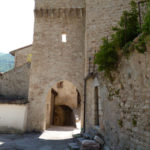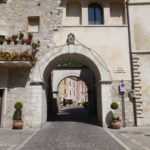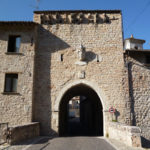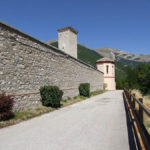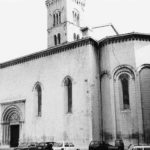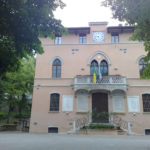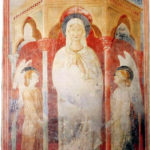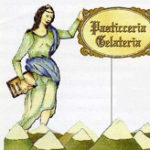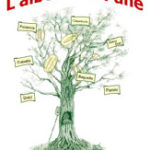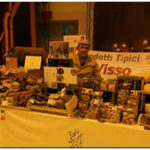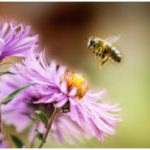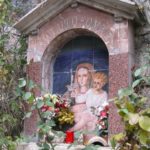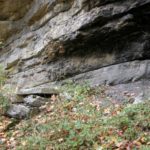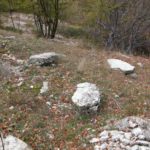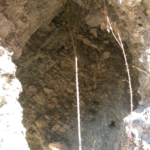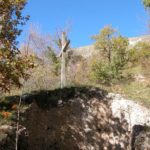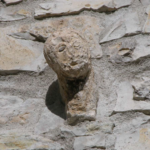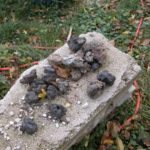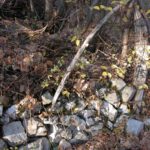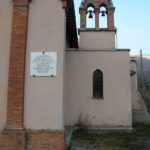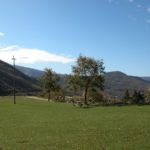VALLE DELL’USSITA ITINERARY
A pleasant tour for the beauty of the scenery; quite effortless, plenty of landscape views of undeniable charm. Suggested for fall season, when the leaves of the woods, at the foot of Mount Bove, turn taking intense hues of yellow and red. Path Surface: 50% paved 30% cart track 20% dirt. Gradient: never over 13%. Half way the track, bikers can visit, walking down to the springs of the creek Ussita, the falls that go by the same name.
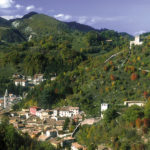 Visso
Visso
The enclosing walls of Visso, which stun for their imposure and efficient defensive capacity, were erected between 1210 -1256 around the first settlement which was known as Castel S. Giovanni. Turris Sanctis Johannis, which at 25 metres high could be seen throughout the land, still dominates the town and the valley of Ussita; it is certainly the most interesting structure in the town, as it was already standing under the dominance of the Longobards around the year 1000. Pieces dating from the 16th Century are on one side of the tower, others came to light in the keep during recent excavations.
visita il sito: www.terremaceratesi.it/pdf/visso.pdf
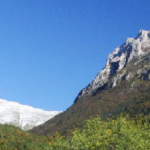 Ussita
Ussita
‘The municipality is called Ussita, but there are no towns bearing that name. The main town in the municipality is called Pieve; the town hall is found here.
Collegiata di S. Maria
Piazza Martiri Vissani
‘The Collegiate Church of S. Maria is an imposing structure in Gothic-Romanesque style. Erected in the XIII Century on a small settlement, it was expanded in the following Century. On the main façade, the lunette above the portal is frescoed by Paolo da Visso, and the church has an 18th Century wood ceiling. The walls bear traces of ancient frescoes and the apse are frescoes which were painted by an unknown master from the Marche in the late XIVth Century. On the left wall, beyond a door leading onto the Sacristy, is a fresco of the Assumption by Paolo da Visso. On the first altar on the left there is a fresco by Spagna (1450-1528) and the remains of paintings by Paolo da Visso are to be found on the walls of the choir stalls. A gigantic figure of S. Cristoforo, painted in the 1300s, is near the main door. A wooden XIIth Century Madonna is particularly prized.
Town Hall of Ussita
The Town Hall of Ussita, located in Pieve, holds precious artwork and two frescos, once in the Pieve of S. Lucia, a rural church, in Sasso, they are thought being the work of “Paolo da Visso”: “Madonna con angeli”, Madonna with angels and “Madonna col Bambino”, Madonna with the Child. The town hall also holds a wooden Cross from the XIV century.
Affresco “Vergine con Angeli” ( Virgin with Angels ) by Paolo da Visso – 1474
Prodotti locali
L’Albero del Pane
via Cesare Battisti, 11 – VISSO
Tel: +390737968000
visita il sito: www.lalberodelpane.it/
Facebook
Apicoltura Calvà
Via Sant’Ercolano, 3 – USSITA
Tel: +39073799293
Ulteriori informazioni
From Tradition to Imaginary and from Imaginary to Sacred
Madonna dell’Uccelletto (Madonna of the “Little Bird”)
The small shrine (aedicola) is located on the border between the municipalities of Ussita and Visso.
At the shrine of the “ Madonna dell’Uccelletto” the shepherds leaving for the transhumance, with which they moved their herds to higher mountains for the summer or to lower ones for the winter, stopped to implore the Madonna for clemency reciting the following prayer : ”Let us return safe and sound to our roof, Madonna of the “Little Bird!”
Sant’Angelo’s Cave
The cave is located at the right of the old mule track that from Val di Panico led to the village of Casali.
“Sant’Angelo’s Cave – or the Hermit’s Cave –is located along the old track, which passes under the new road. Until recently, there was a portion of the wall in its lower segment, the stones have been removed to restore the church in Casali.”
Saliere (Ussita – Casali)
La Foce (the mouth of flowing water) is under a ditch in a place called Saliere, on a plateau
“In this place tiny molds of salt were laid down for the sheep, that’s why it was called, at that time, Saliere(salt cellar).”
The Muti’s Cave
The cave is above the small community of Casali:
“it is said that if one went to the Muti’s cave, one would hear a cock’s crow and would find a treasure. Yet nobody has ever gone.”
Fornace (Ussita – Casali)
The lime kiln is located under the Cross
“At Casali, on the Fonte del Pero (the pear’s fountain) there was a lime kiln. The kiln was made by carving a hole in the ground and then stones were laid around so that to create a mold and a cover over it; afterwards the fire was lit. In the kiln the lime would be ready after for 15-20 days the fire had been incessantly going. The lime was then placed in a round hole, it was extinguished and cooled off by covering it with soil and it would be, then, drawn from there whenever needed.”
Casali (Ussita)
The head in stone is on the wall of the house facing the Church of the Saints Vincenzo and Anastasio, in Casali of Ussita
“There were plenty of legends and treasures! They used to say that where that head was looking to, there was a treasure.”
San Rocco (Ussita – Casali)
In the gardens behind the cemetery, there are several smelter sites. Under the cemetery and the church remains of foundries can be found and it is said that there the friars used to work iron.
Fosso San Simone (the Ditch of San Simone)
Mule track Casali Macereto intersecting Fosso San Simone.
“Fear has always inhabited this place, even though, actually,just a little below, passed the cemetery. Once, a man who had to take the coach bus to/at Ussita, in front of the Cemetery had someone walking ahead of him. The man hurried and tried to catch up with that person walking in front of him, to go together. When they reached the gate that person went through the gate without opening it. All that the man heard was a rustling and then that person disappeared.”
Santa Scolastica’s Church
The Church of Santa Scolastica is located in the small center of Capovallazza, on the right going up.
“In Bagno di Capovalazza there is Santa Scolastica’s Chapel. The chapel was built as an offering so that the healing water would flow again. The water flow had stopped because of the magic of a renowned wizard in Cecco d’Ascoli.”
The “Ara”
In May it was a tradition to sow in the lawn behind the church Casali
“Here they used to sow in May. On April 30th, they used to go, and fell a beech tree from which the trunk was peeled off, then they used to take the green top of another beech, which was in bloom, and that top was placed on the top of the skinned beech tree. All the men, young and old, went to fell and bring back that beech tree: I recall when we were kids we used to divide up in two groups, the young and the senior, and we took two trees, one bigger and the other one smaller. It was hard work to get it up. Then, we would leave only the green top in bloom if there was one, but it was unlikely. Therefore, we would take the green top from another tree and we would place it on our tree. The tree could be taken from anywhere, as long as if it were on a private property, the wood from the tree would be left to the owner. In the evening, we would celebrate and we would “cantare a Maggio “sing as you do in May”. We would go from home to home singing songs. Then the day after or two days after, we go back from home to home to get an offering. They would give you flour, eggs, cheese to make a kind of pasta called tagliatelle. We would buy some ground meat to make some “ragu” sauce and we would have enough for dinner. Ecco Maggio, ecco Maggio, se ne viene poggio poggio, se ne viene terra terra, ecco maggio figlia bella. Quant’è bella la palomba passa il mare e non si bagna, poi si posa sopra un faggio, fuori Aprile e dentro Maggio”.—-“Here is May, here is May, it comes easy, easy; it comes low, low, here is May my beautiful daughter. How beautiful is the palomba dove that flies over the sea and doesn’t get wet then it rests on a beech tree, out April and in May !”


